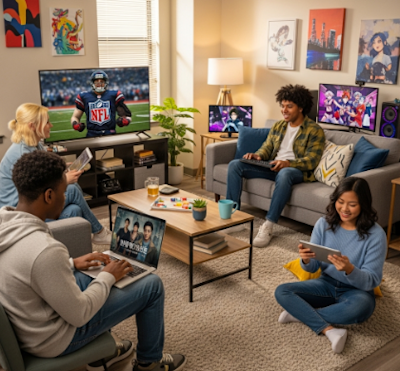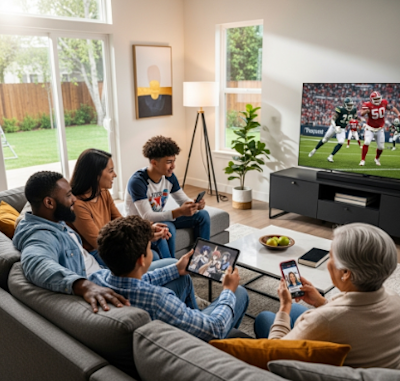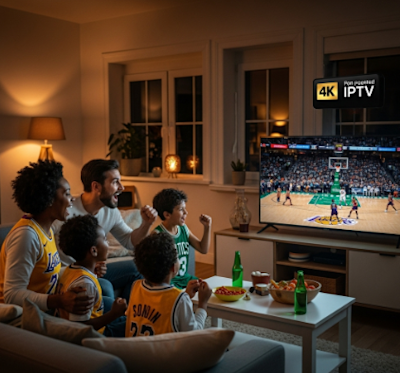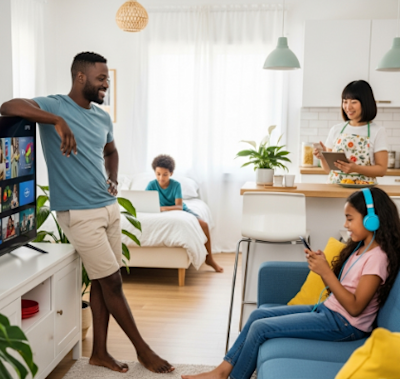Across the United States, a quiet revolution is reshaping how people watch television. The rise of IPTV—Internet Protocol Television—is giving Americans a level of control over their entertainment experience that was unimaginable just a decade ago. No longer are viewers bound by fixed schedules, regional programming limitations, or expensive cable bundles. Instead, IPTV offers instant access to global content, tailored recommendations, and flexible viewing on any device, at any time.
At the heart of IPTV’s appeal is the concept of viewer empowerment. Traditional cable services dictate what you watch and when. IPTV flips that model. It streams content over an internet connection, giving users access to live TV, on-demand movies, sports, and global channels through an interface that puts them in charge. Whether it’s a stay-at-home parent in Chicago, a gamer in Austin, or a retiree in Florida, IPTV allows viewers to design their own entertainment environment.
One of the strongest shifts IPTV has enabled is schedule freedom. Americans today live busy, diverse lives. Between long work hours, multiple time zones, travel, and hybrid work-from-home setups, sticking to a rigid TV schedule simply doesn’t work. IPTV lets you pause, rewind, or restart live broadcasts, and it stores shows so you can catch up on your terms. Whether it's the Monday night football game or the latest HBO drama, viewers never miss out—because the content adapts to their lives, not the other way around.
The platform flexibility of IPTV is another major draw. Americans increasingly use multiple screens throughout the day: watching on a TV in the living room, switching to a tablet during dinner, or finishing a movie on a smartphone in bed. IPTV makes all this seamless. One account often supports multiple devices, letting users start a show on one device and continue it on another—without missing a beat.
Personalization is another key aspect that’s transforming the American entertainment experience. IPTV platforms track viewing behavior to suggest content based on individual preferences. A sports lover might be shown highlights and replays from their favorite teams. A fan of documentaries might get access to curated lists of history or science programs. Even kids benefit, with dedicated children’s sections offering age-appropriate recommendations.
And speaking of kids, IPTV is quickly becoming the default entertainment option in American households with children. Parents love that they can limit content, filter shows based on age, and even set time limits. No more worrying about what’s airing on cable at 3 p.m. With IPTV, every cartoon, educational show, and animated movie is available on demand and under parental supervision.
IPTV also supports the multicultural fabric of American society. Families that speak languages other than English can access live channels from their home countries. Whether it’s Spanish telenovelas, Hindi dramas, Korean variety shows, or Arabic news broadcasts, IPTV offers options for everyone. This is especially meaningful for immigrants and first-generation Americans who want to stay connected to their cultural roots.
The impact on how sports are consumed in the U.S. cannot be overstated. IPTV allows access to multiple sports streams, including local, national, and international matches. NFL, NBA, MLB, UFC, European football, Formula 1—you name it, and IPTV brings it live and in high definition. This has become a game-changer for fans, who no longer have to rely on overpriced sports packages or hope their local provider carries the match.
Beyond sports, IPTV is enhancing the way Americans engage with news and live events. Users can follow real-time election coverage, protests, global emergencies, and breaking news as it unfolds from any country and perspective. IPTV offers a broader news diet, free from the geographical and editorial limitations of local broadcast stations. This gives viewers access to multiple angles on major events, which is crucial in a polarized media environment.
Streaming quality has also taken a leap. While early internet TV was plagued by lag and low resolution, modern IPTV services offer full HD, 4K, and even 8K streaming. Combined with smart TVs and fast broadband, the experience is often superior to cable—especially when it comes to visuals and sound.
Cost-efficiency is another driver of IPTV’s popularity. Many American households have been cutting the cord to avoid the high prices and bloated channel packages of traditional cable. IPTV subscriptions tend to be much cheaper and provide more value, often including thousands of channels from the U.S. and abroad, premium movie selections, and sports content—all under one monthly fee.
There’s also a growing DIY culture around IPTV. Tech-savvy users install their own IPTV apps, load custom playlists, and tailor their own setups using Android boxes, Firesticks, or smart TVs. This independence aligns with the American value of choice and self-direction. People don’t want to be told what to watch—they want the freedom to choose, explore, and control their media.
This freedom, however, comes with responsibilities. The rise in IPTV’s popularity has also led to a flood of unlicensed providers. Americans need to be careful when choosing services, ensuring they operate legally, provide secure streams, and don’t compromise personal data. Legitimate IPTV providers offer encrypted streams, 24/7 customer support, and consistent content updates—all of which are worth the investment.
IPTV is also starting to integrate with smart home ecosystems. Imagine saying “Alexa, play The Office on IPTV” and having your TV, lights, and speakers adjust automatically. These kinds of integrations are already happening, especially among American homes using smart devices, and they point toward a future where IPTV is fully embedded in daily routines.
Even the way Americans socialize is changing through IPTV. Watch parties using group streaming features are becoming popular. Families across states share virtual movie nights, friends co-watch reality shows and message each other during the episodes, and sports fans cheer (or groan) together while watching live games from different cities. IPTV is not just for passive consumption—it’s becoming an active, connected experience.
Looking ahead, the future of IPTV in America is bright. Artificial intelligence will make recommendations more precise. Augmented and virtual reality integrations may offer 360-degree game replays or immersive concerts. Interactive content like real-time voting during shows, live quizzes, and gamified streaming is already being tested. IPTV is not standing still—it’s evolving faster than any previous format of television.
In the end, IPTV isn’t just a new way to watch TV. It represents a broader shift in how Americans think about entertainment, identity, and technology. From personalized schedules to global access, from affordability to immersion, IPTV is putting the remote back in the hands of the viewer—and letting them rewrite the rules of what it means to “watch TV.










